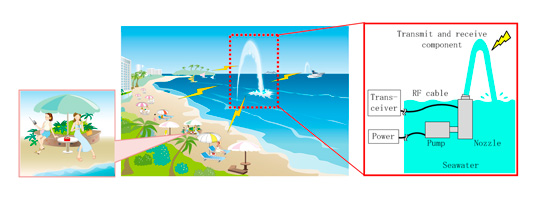Mitsubishi has created a large antenna made of seawater

In order to use a plume of seawater as an antenna it needs to be insulated, so Mitsubishi Electric developed an insulated nozzle, equipped with a quarter-wavelength tube, that transmits radio waves to the antenna even when the plume is physically connected to the sea surface.
In order to achieve antenna efficiency, the Mitsubishi researchers needed to determine the ideal diameter of the plume, which they did using digital simulations, and found it to have a 70% efficiency rating — enough to transmit and receive signals.
With traditional antennas, size determines frequency, so many tend to be large, making it difficult to find an ideal location. However, SeaAerial, despite its size, can be installed anywhere along the shore, as well as offshore, and it can be moved easily by ship and other vessels because basically it requires just a pump and an insulated nozzle.


Comments are closed, but trackbacks and pingbacks are open.